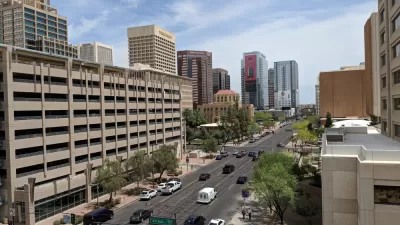In 2009 we worked with Ron Thomas, Mary Means, and Goody Clancy to help plan and run a large 500+ person visioning event in the town of Shreveport. We set up the event the night before with computers at every table for brainstorming and a [...]
In 2009 we worked with Ron Thomas, Mary Means, and Goody Clancy to help plan and run a large 500+ person visioning event in the town of Shreveport. We set up the event the night before with computers at every table for brainstorming and a keypad polling system providing each participant with a handheld device for voting and prioritizing strategies in the region. We had a tech table set up next to the audio/filming crew, a group that was very helpful in getting us what we need to set up. We tested everything, including making sure the keypads registered in the far corners of the convention space.
The next day the meeting started well. Then came the time to conduct the first keypad vote. We started with demographic questions to learn more about who was at the meeting and to give us the ability to do cross tab analysis of the polling data to see how different groups voted. I explained how to use the keypads and then asked people how long they had lived in the area. A vote counter in the corner of the screen indicated how many votes had been cast. To our horror, the count petered out at 190 to 210 even though we knew there was at least twice that many people in the room. My crew scrambled to figure out what was wrong, we reset the vote but again, less than half the room's votes were coming in. We switched over to the brainstorming exercise in the hopes that we could fix the problem with the keypads. Only a few minutes into the brainstorming exercise, however, and hands started going up with complaints that their computers were no longer linked to the network. I went over to Ron Thomas and said, that's strike two, in events this big you don't get three strikes, time to go old fashion pen & paper. What caused the problem was hard to determine but several theories emerged. Some wondered whether all the equipment of the AV crew caused interference with wireless used by the keypads and computers. Another theory was that the Caddo-Bossier Office of Homeland Security, nearby, was working with some new technology that interfered with the wireless? Also possible, we simply needed a more central/elevated antennae structure for the wireless keypads to accomodate for the size of the room and the number of people using the space. The most important thing was that we had a Plan B and a Plan C for backup. Despite the technical problems, it was a successful meeting with positive reviews in the evaluation survey. The plan was adopted and the city and parish have since approve funding to hire a new planner for the planning commission to coordinate implementation of the plan with a number of initiatives already taking shape.
That's one example of equipment failure, we have also had events hampered by 2 feet of snow falling the night before, and meetings where angry protesters started chanting and yelling, trying to shut down the process.
"What to do when public participation goes terribly wrong" is the title of a session PlaceMatters is facilitating at APA next month. As a non-profit with a mission to spread the use of tools and techniques effective in improving land use planning and community development, this means shared the tough situation stories as well as the successes. Holly St.Clair from Boston's Metropolitan Area Planning Council and John Fernsler from WRT (the first firm to win APA's new professional excellence award) will also be joining us and sharing some of their experiences and how crisis was averted. The plan is to also share stories submitted to us.
Send Jason Lally on my staff your stories, videos, and/or pictures ([email protected]). It can be just a sentence or two just to give us a feel for the situation. If we select your story, we may ask you for more details. If you have any near misses or actual disasters in public planning/facilitation, please send them our way. We'd love to include your story. We will send $20 gift cards to the top 2 submissions. And join us in Boston at APA, April 10 from 1-2:15PM (S456).

Planetizen Federal Action Tracker
A weekly monitor of how Trump’s orders and actions are impacting planners and planning in America.

Map: Where Senate Republicans Want to Sell Your Public Lands
For public land advocates, the Senate Republicans’ proposal to sell millions of acres of public land in the West is “the biggest fight of their careers.”

Restaurant Patios Were a Pandemic Win — Why Were They so Hard to Keep?
Social distancing requirements and changes in travel patterns prompted cities to pilot new uses for street and sidewalk space. Then it got complicated.

Platform Pilsner: Vancouver Transit Agency Releases... a Beer?
TransLink will receive a portion of every sale of the four-pack.

Toronto Weighs Cheaper Transit, Parking Hikes for Major Events
Special event rates would take effect during large festivals, sports games and concerts to ‘discourage driving, manage congestion and free up space for transit.”

Berlin to Consider Car-Free Zone Larger Than Manhattan
The area bound by the 22-mile Ringbahn would still allow 12 uses of a private automobile per year per person, and several other exemptions.
Urban Design for Planners 1: Software Tools
This six-course series explores essential urban design concepts using open source software and equips planners with the tools they need to participate fully in the urban design process.
Planning for Universal Design
Learn the tools for implementing Universal Design in planning regulations.
Heyer Gruel & Associates PA
JM Goldson LLC
Custer County Colorado
City of Camden Redevelopment Agency
City of Astoria
Transportation Research & Education Center (TREC) at Portland State University
Camden Redevelopment Agency
City of Claremont
Municipality of Princeton (NJ)




























